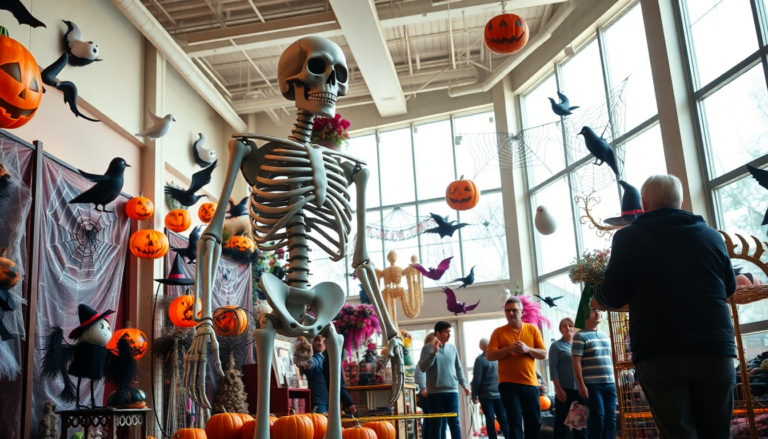Argomenti trattati
As Halloween approaches, we’re witnessing a fascinating shift in the world of seasonal decorations. Retailers like Costco are taking the classic spooky vibe to the next level, blending creativity with technology to create experiences that truly engage consumers. Take, for instance, the giant skeleton—a staple for Halloween lovers—that has received a striking upgrade. This evolution perfectly illustrates how innovation can enhance customer experiences.
Emerging Trends in Seasonal Marketing
So, what’s changing in seasonal marketing? The rise of interactive decorations marks a significant transformation in how brands engage with consumers. Imagine a giant skeleton that not only looms in your yard but also features LCD eyes that follow you as you walk by—creepy, right? This addition doesn’t just amp up the aesthetics; it taps into a larger trend where technology is used to create memorable interactions that leave a lasting impression.
The data tells an intriguing story: as shoppers increasingly crave immersive experiences, retailers must step up their game. The giant skeleton’s journey from a static prop to a dynamic centerpiece captures this trend perfectly. In my experience at Google, I’ve seen how such innovations can significantly enhance brand engagement and foster customer loyalty—who wouldn’t want to talk about a skeleton that seems to watch you?
Data Analysis and Consumer Performance
Let’s dive into the numbers behind these new interactive decorations. The buzz surrounding the upgraded giant skeleton on social media is hard to miss. Comments on Instagram posts show a blend of excitement and a little fear—exactly the reaction marketers aim for during this spooky season.
Moreover, the giant skeleton’s quick sell-out rate underscores a key point: successful seasonal marketing relies on timely availability and creating a buzz. It’s clear that effective inventory management and strategic marketing are crucial for keeping up with consumer demand. Marketers today must prioritize understanding the customer journey, leveraging data-driven insights to optimize their campaigns and ensure they hit the mark.
A Detailed Case Study of the Giant Skeleton
Now, let’s take a closer look at Costco’s giant skeleton. Last year, it was a hit, but this season, the addition of moving eyes has taken its appeal to new heights. Metrics like customer inquiries, social media engagement, and sales figures indicate that this redesign not only boosts visibility but also deepens emotional connections with shoppers.
Customer feedback highlights the lifelike features as a standout element, creating a unique experience that resonates with Halloween enthusiasts. The skeleton’s ability to engage through movement sets it apart from traditional decorations, with many comments expressing both excitement and a hint of fear. To ride this wave, retailers should aim to craft similar experiences that entice consumers and encourage them to share their encounters online.
Practical Implementation Tactics
If you’re a marketer looking to adopt these strategies, the key is balancing creativity with solid data analysis. Start by conducting thorough market research to identify emerging trends in consumer preferences. By analyzing data from past campaigns, you can discover which features resonate the most with your audience.
Next, think about how to incorporate technology into your products. Whether it’s through augmented reality, interactive elements, or dynamic displays, the goal is to create a memorable experience that customers will want to share. Partnering with tech innovators can enhance your offerings and keep you ahead of the competition.
Finally, tracking key performance indicators (KPIs) such as engagement rates, conversion rates, and customer feedback will help you assess the success of your strategies. Continuous optimization based on these insights will allow you to refine your approach and elevate the overall customer journey.
Key Metrics to Monitor for Optimization
As you roll out these strategies, it’s essential to keep an eye on specific KPIs to effectively measure performance. Metrics like click-through rates (CTR) on promotional content, return on ad spend (ROAS), and overall sales figures will provide valuable insights into how well your seasonal products resonate with consumers.
Additionally, gathering customer feedback through social media and direct surveys can guide future product enhancements and marketing strategies. By staying attuned to consumer sentiment, brands can adjust their tactics to better meet market demands, ultimately leading to increased sales and stronger brand loyalty. So, how will you ensure that your seasonal offerings stand out this Halloween?

